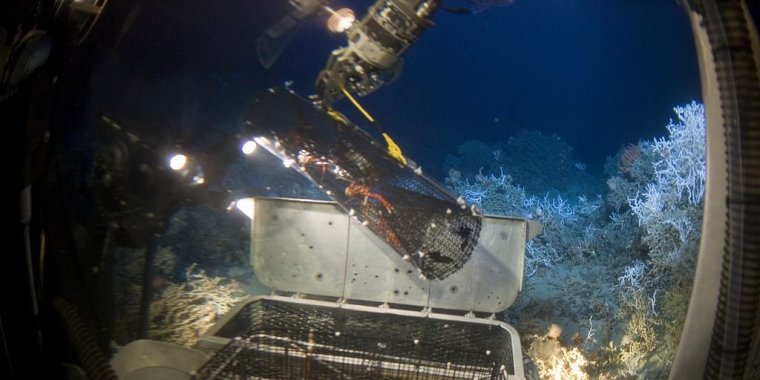| News / Science News |
Bottom of Pacific Found to Be Getting Colder
A Harvard study has found that parts of the deep Pacific may be getting cooler as the result of a climate phenomenon that occurred hundreds of years ago.

Deep-sea exploration. Photo: Dr. Steve Ross/NOAA
Prior research has suggested that it takes a very long time for water in the Pacific Ocean to circulate down to its lowest depths. This is because it is replenished only from the south, which means it takes a very long time for water on the surface to make its way to the bottom—perhaps as long as several hundred years.
That got researchers to thinking that water temperature at the bottom of the Pacific could offer a hint of what surface temperatures were like hundreds of years ago.
The researchers obtained data from the Argo Program—a group of people who together have been taking ocean measurements down to depths of approximately two kilometers. As a comparative reference, the researchers also obtained data gathered by the crew of the HMS Challenger—they had taken Pacific Ocean temperatures down to a depth of two kilometers during the years 1872 to 1876.
The researchers used the data to build a computer model meant to mimic the circulation of water in the Pacific Ocean over the past century and a half.
The model showed that the Pacific Ocean cooled over the course of the 20th century at depths of 1.8 to 2.6 kilometers. The amount is still not precise, but the researchers suggest it is most likely between 0.02 and 0.08° C. That cooling, the researchers suggest, is likely due to the Little Ice Age, which ran from approximately 1300 until approximately 1870.
Prior to that, there was a time known as the Medieval Warm Period, which had caused the deep waters of the Pacific to warm just prior to the cooling it is now experiencing. (Tasnim News Agency)
YOU MAY ALSO LIKE


